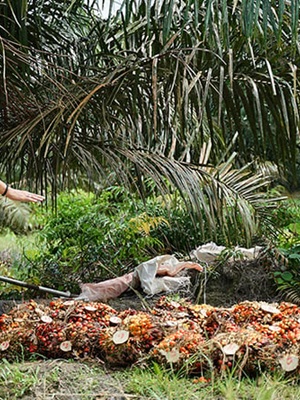Despite high project failure rates and the unintended negative impacts of tree planting, over 100 companies have still pledged to support the World Economic Forum’s Trillion Tree campaign. Furthermore, a recent study found that in the last two decades, 98% of Fortune 500 companies in France, Switzerland and the United Kingdom have engaged in tree planting. In the US, tree planting has also gained massive support, with 90% of Americans in favour of this environmental initiative.
While there’s no denying that tree planting can generate positive results, with planting urban forests in megacities alone bringing benefits equivalent to approximately US$500 million per year, is it really the best strategy to restore biodiversity and address the issue of climate change? Or is there a better solution?
In this article, we will explore why businesses should prioritise protecting forests rather than planting trees.
Rethinking Tree Planting Initiatives
Many tree planting programmes lead to biodiversity loss rather than taking society closer to a sustainable future. For instance, Mexico’s Sowing Life campaign led to the destruction of over 180,000 acres of forest in its first year. In China, the Grain for Green initiative resulted in a 6.6% decline in native forest cover due to the planting of single species of trees. Projects in other parts of the world have also destroyed non-forested ecosystems through afforestation, or the act of planting trees in places where forests would not otherwise occur.
Even if people could match the rate of forest loss by planting enough trees, the large trees and mature ecosystems that make forests havens for biodiversity and robust carbon sinks will take centuries to achieve. Hence, a more effective, low-cost approach that has an immediate positive impact is to prevent deforestation.
However, it’s important to note that while tree planting is not the same as protecting forests, there are some situations where planting trees is the best way to achieve desired results. One example is achieving tree equity in cities to improve air and water quality, reduce temperatures and enhance the overall quality of life.
The Benefits of Protecting Forests
With the livelihoods of over 1.6 billion people, including more than 2,000 indigenous cultures, relying on forests, it’s easy to understand why it’s crucial to conserve forests. Home to more than 80% of terrestrial species of plants, animals and insects, forests play a crucial role in maintaining biodiversity and combating climate change.
Detailed below are the key benefits of protecting forests:
1. It keeps people healthy.
Aside from providing fresh air and clean water, forests are also a critical source of medicine. In fact, up to 25% of all medicinal drugs in developed countries are plant-based. This rate is even higher in developing countries, where as much as 80% of medicines are derived from plants.
Furthermore, access to forest-based food systems has been associated with dietary diversity, which leads to better health. With indigenous communities consuming numerous types of wild food they harvest in forests, deforestation threatens their food source.
2. It preserves biodiversity and fights climate change.
Between 2015 and 2020, around 10 million hectares of forest globally have been lost, and a much larger area of land suffers from degradation.
The environmental consequences of deforestation are significant. Aside from contributing a large amount of harmful greenhouse gases, it also threatens species that naturally live in forests.
With this, protecting and restoring forests can help address the pressing climate change issue and prevent biodiversity loss– all while being an excellent source of food, medicine ingredients and other goods.
3. It can generate millions of green jobs.
Forests provide more than 86 million green jobs and support the livelihoods of millions of people. With over 90% of those living in extreme poverty relying on forests for wild food, firewood and other aspects of their livelihood, investing in forest protection and restoration makes economic sense.
The Great Green Wall project, which aims to restore 100 million hectares of degraded land and sequester 250 million tonnes of carbon by creating an 8,000 km green belt across Africa, will also create approximately 10 million green jobs. Upon successful completion, this project is also expected to be the largest living structure in the world, with an area three times bigger than the Great Barrier Reef in Australia.
Forest Protection for Planet Health and Economic Recovery
Investing in forest protection and restoration plays a key role in the recovery of our planet’s health and economy. Its benefits for communities and the environment are undeniable, which is why companies and governments must go beyond tree planting initiatives and consider integrating forest conservation into their environmental commitments.
By working together to restore forests on a massive scale and reverse the degradation of land and ecosystems, we can significantly improve ecological resilience and build a greener future.
Posted 31/07/2024

















